Guest blog post by Lynn Verschuren, Museum Studies project placement in Special Collections.
Earlier this month, the University of Glasgow welcomed internationally renowned scholars in the fields of philosophy, literature, art history, linguistics and disability studies as part of the Understanding the Senses: Past & Present conference held on campus for the second year running. Hosted by Professors Elizabeth Robertson and Fiona Macpherson in collaboration with Professor Annette Kern-Staehler (of the University of Bern), the aim of this interdisciplinary symposium was to probe how medieval and early modern discourses on the nature and function of the senses can inform discourses of the present and vice versa. As part of this year’s conference, I was given the unique opportunity to use the university’s extensive early book collections to curate a ‘pop up’ display relating to the history of the senses.
Trying to recapitulate the interdisciplinary nature of the conference, I aimed to tailor it to the specialist audience by including a wide array of manuscripts and early printed books: thus besides literary works, such as Chaucer’s The Canterbury Tales or his Romaunt of the Rose (Glasgow holds the only extant copy of this work) which problematize contemporary understandings of the senses, I similarly chose to display some of Special Collections’ amazing philosophical and medical treatises and encyclopaedias. Among these, it was one that caught my eye in particular: a 1504 copy of the Margarita Philosophica.
First published in 1503 by the German Carthusian humanist writer Gregor Reisch (1467 – 1525), the Margarita Philosophica (‘Pearl of Wisdom’) is generally considered to be the first modern printed encyclopaedia, and was widely adopted as a university textbook during the sixteenth century. Divided into twelve chapter, it deals with Latin grammar, dialectics, rhetoric, arithmetic, music, geometry, astronomy, physics, natural history, physiology, psychology and ethics. This copy was previously owned by John Ferguson (1838 – 1916) and was purchased, along with the rest of his extensive book collection, by the University of Glasgow in 1921.
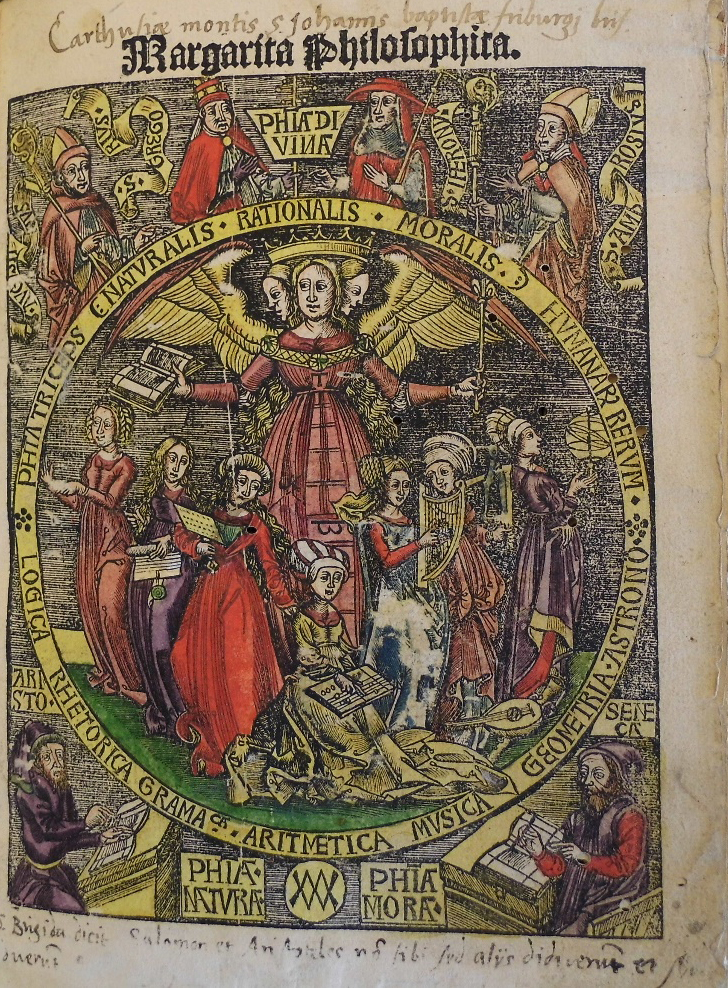
The work opens with a beautiful illustration of Prudentia and the 7 liberal arts surrounded by depictions of Saints Jerome, Gregory, Augustine and Ambrose as well as Aristotle and Seneca.
Each chapter is introduced by beautiful woodcut illustrations by an anonymous artist. While Special Collections holds no less than 19 copies of the Margarita Philosophica, this is the only copy that, as far as I am aware, includes colouring.
Initially, I decided to include this copy of the Margarita Philosophica because of the beautiful woodcut illustration of a human head shown below.
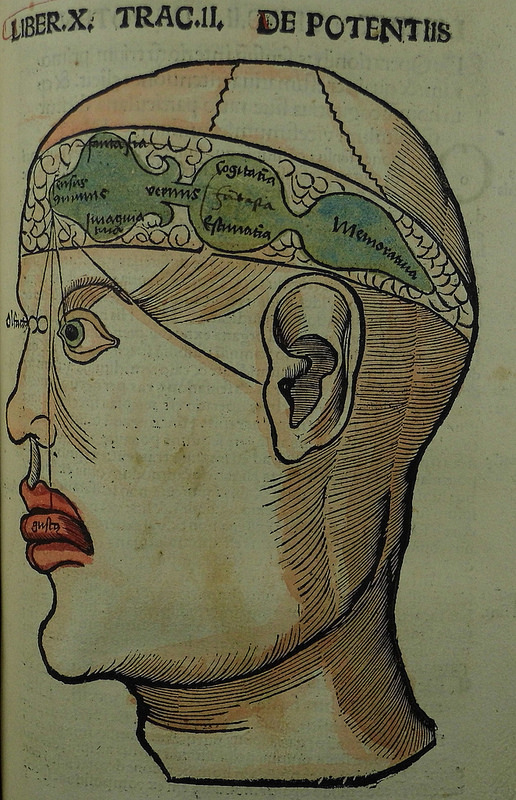
Diagram of the human brain representing the traditional medieval and early Renaissance conceptions of the structure of the human brain and its mental faculties
During the medieval period it was widely believed that one’s various mental faculties were located in three ventricles of the brain. It was commonly believed that the first ventricle was where the information from the sense organs was received and processed (note the lines between the lips, eyes and ears and the head) before passing, via the vermis, to the middle ventricle, the seat of reason, for cogitation. Eventually thoughts passed to memory, which was situated in the third and last ventricle. Albeit the fact that this so-called Cell Doctrine did not originate with Reisch, the popularity of his work is one of the reasons why illustrations similar to the present one have been widely reproduced and can be found until well into the 18th century. Besides this great illustration of the brain, however, the Margarita Philosophica includes a number of other great woodcuts that, in hindsight, I have could have put to good use in my display on the senses.
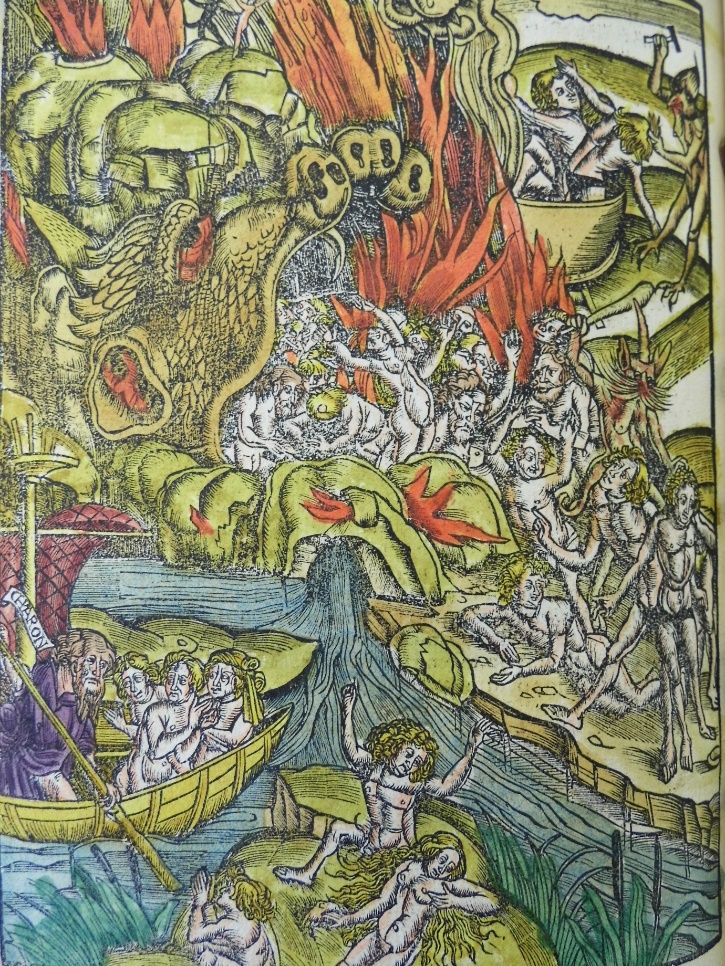
This illustration depicts the Hellmouth
Besides is amazing depiction of the Hellmouth, the Margarita Philosophica contains the earliest (if not the first) schematic illustration of the eye ever published.
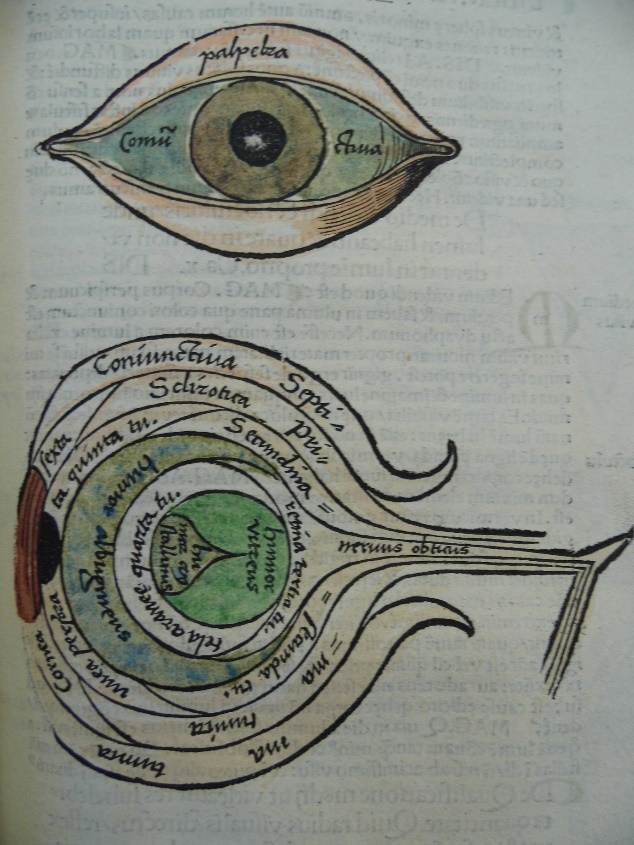
The human eye is shown in from the front as well as in sectioned profile. The Latin labels identify, among other features, the eyelids, the pupil, the iris, the retina and the even the optic nerve.
Additionally, the Margarita Philosophica boasts this amazing depiction of the Zodiac Man:
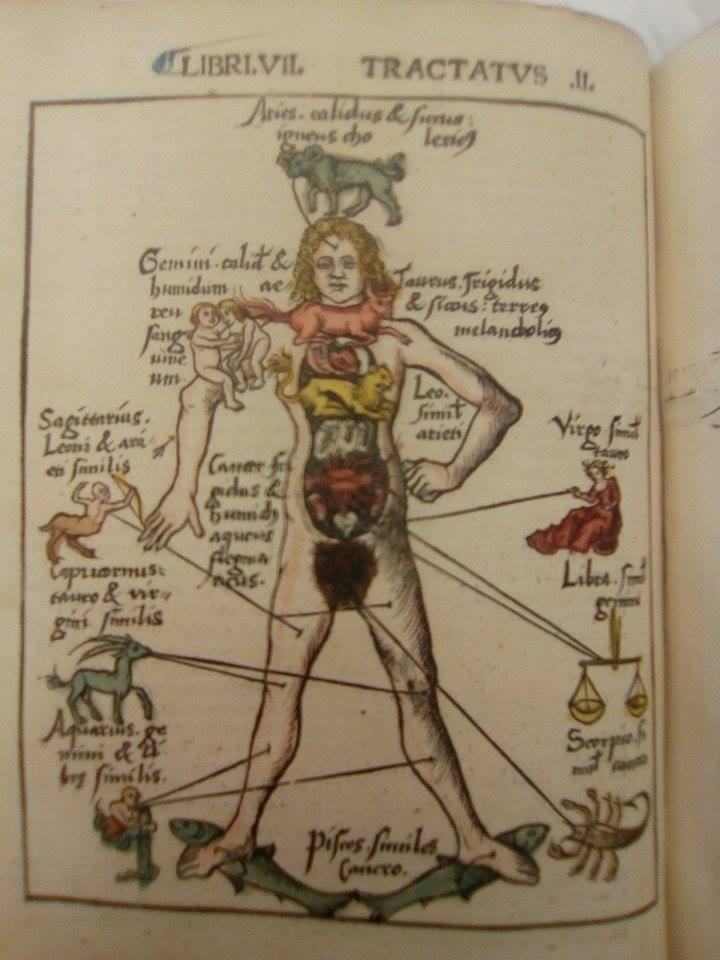
Diagram of the Zodiac Man
The Zodiac Man, as such a representation of the celestial influence on the human body, was found in hundreds of medieval manuscripts. Indeed, part of the medieval worldview was the idea that man was a microcosm which reflected the macrocosm of the Ptolemaic universe; as the Earth was divided into regions influenced by the planets, similarly the body of man was divided into so-called regions governed by signs of the Zodiac. As you can see the twelve zodiacal symbols are painted next to the body in the appropriate places, from Aries for the head to Pisces to the feet. Sketches of the Zodiac men instructed doctors whether it was safe to bleed a patient or to perform surgery: if the moon was in the sign of the body-part in question, it was not recommended.
The Margarita Philosophica is of course only one of the many amazing manuscripts and early printed books that I had the pleasure to work with over the last ten weeks. And while I would love to explore each and every item in more detail here, the sheer size of this blog unfortunately does not permit it. For those of you whom this short introduction has left with for a taste for more, pictures of the books that were displayed as part of the Understanding the Senses: Past & Present project have been digitised and a Flickr set of the display is available for you to explore at your own leisure on the Special Collections website.
Find out more about the Understanding the Senses: Past and Present project.
Sources:
For further information on the Margarita Philosophica visit <http://bibliodyssey.blogspot.lu/2006/12/margarita-philosophica.html> and <http://www.maa.org/press/periodicals/convergence/mathematical-treasures-margarita-philosophica-of-gregor-reisch>.
Categories: Special Collections
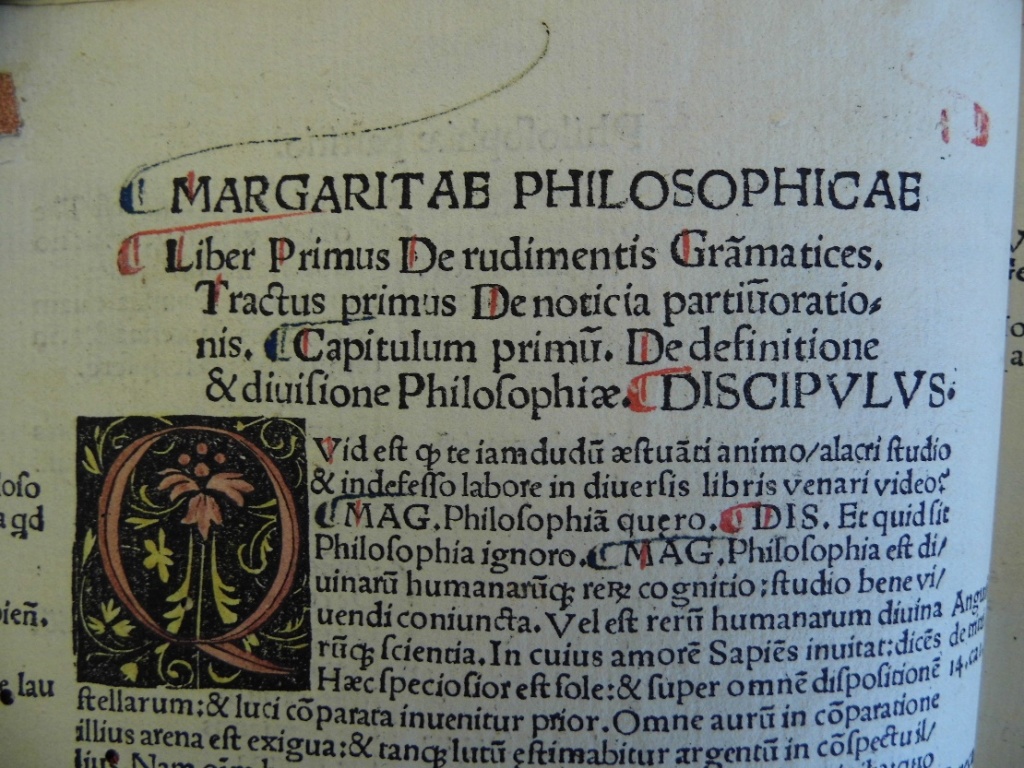


 Johnny Beattie: ‘The Clown Prince of Scotland’
Johnny Beattie: ‘The Clown Prince of Scotland’  The Arte of Faire Writing
The Arte of Faire Writing  Visualizing Collation in the Hunterian Manuscript Collection
Visualizing Collation in the Hunterian Manuscript Collection  Sugar Machines: How Archives in Glasgow hold pieces of Caribbean History
Sugar Machines: How Archives in Glasgow hold pieces of Caribbean History
Leave a comment